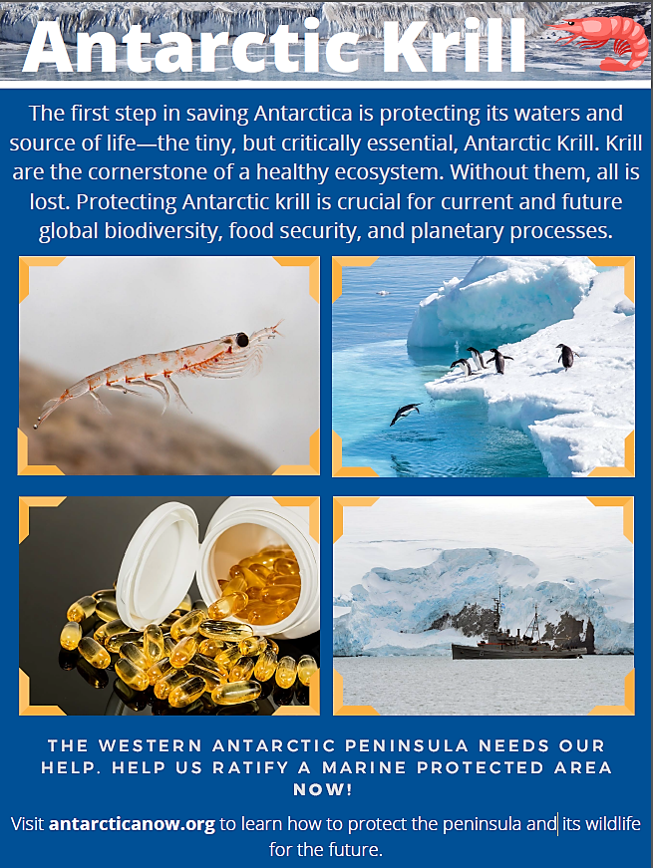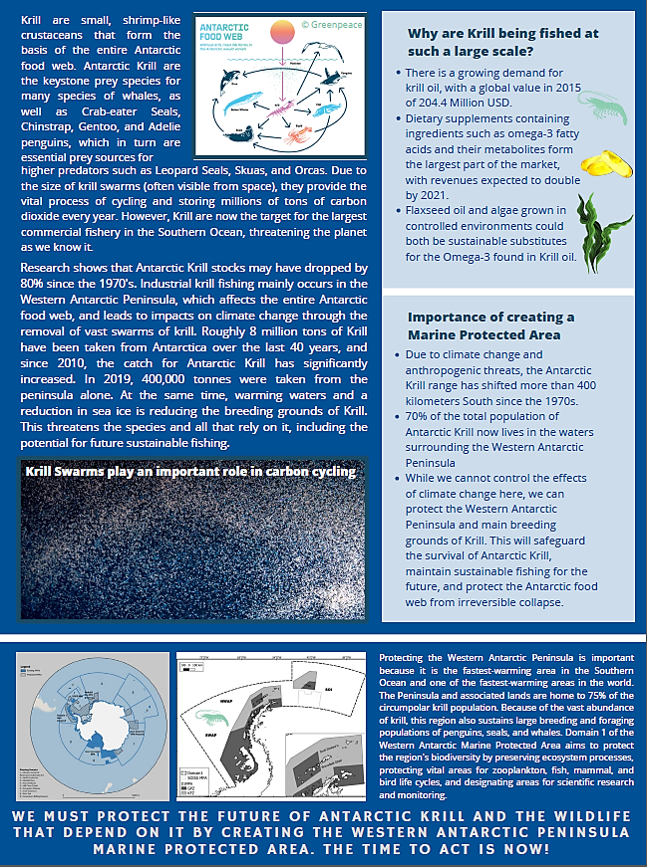what are krill?
Krill (order Euphausiacea) are small, shrimp-like crustaceans that are found in all the world's oceans. These cosmopolitan animals are are in the same class of animal as crabs, lobsters and crayfish, as well as shrimp and woodlice! About 82 different species of krill have been described to date, and they are known to congregate in dense swarms of more than 10,000 individuals per cubic meters of water!
Antarctic krill is one of the largest species of krill. They can grow up to about 6 centimeters in length and can live for up to 5 years. These small animals feed on phytoplankton, microscopic, single-celled plants that drift near the ocean's surface and live off carbon dioxide and the sun's rays. And while they are very tiny, krill play a huge role for our planet: they are essentially the fuel that runs the Earth's marine ecosystems.
"What do you mean by they are 'essential'?"
Krill are the main prey of animals including penguins, fish, and whales (including the largest known to have ever lived on earth, the blue whale)!
Antarctic krill is one of the largest species of krill. They can grow up to about 6 centimeters in length and can live for up to 5 years. These small animals feed on phytoplankton, microscopic, single-celled plants that drift near the ocean's surface and live off carbon dioxide and the sun's rays. And while they are very tiny, krill play a huge role for our planet: they are essentially the fuel that runs the Earth's marine ecosystems.
"What do you mean by they are 'essential'?"
Krill are the main prey of animals including penguins, fish, and whales (including the largest known to have ever lived on earth, the blue whale)!

